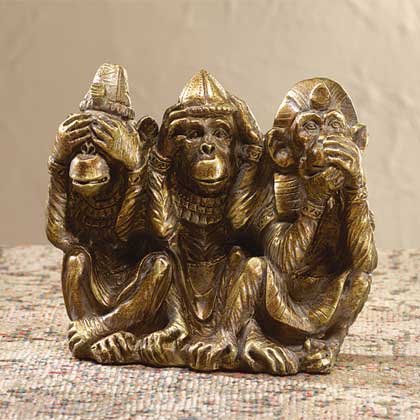According to the Chinese Calendar, 2004 is the Year of the Monkey (link link link). And so was 1968, the year I was born (August 25th, coming soon, now would be a good time to mark your calendar, wink-wink nudge-nudge, now that everyone’s moved to Trillian and isn’t getting automatic ICQ reminders).
Which means that this year, I’ll be Three Monkeys old.

Here is a collection of three monkey figures, and here’s an explanation of source for the recurring image.
Now, I detest birthdays, mine most of all, because they are “your special day”, and therefore have a tendency to make me feel totally not special, mundane, puny, and old. I can measure my life goals and achievements, and strengthen my conviction that I am quite pathetic.
But at the same time, I keep wishing that one of those damn things will be special. And I figure that my three monkeys birthday would be a fine occassion for this.
Because waiting until I’m Forty is just too depressing (although it’s a pretty short wait).
I was 12 when I was one monkey old, 24 when I was two monkeys old, and I’ll be 48 when I’m four monkeys old, and I’ll probably not live to see 12 monkeys, so no reason to wait for a Terry Gilliam marathon. Sort of gives you prespective, I think.

